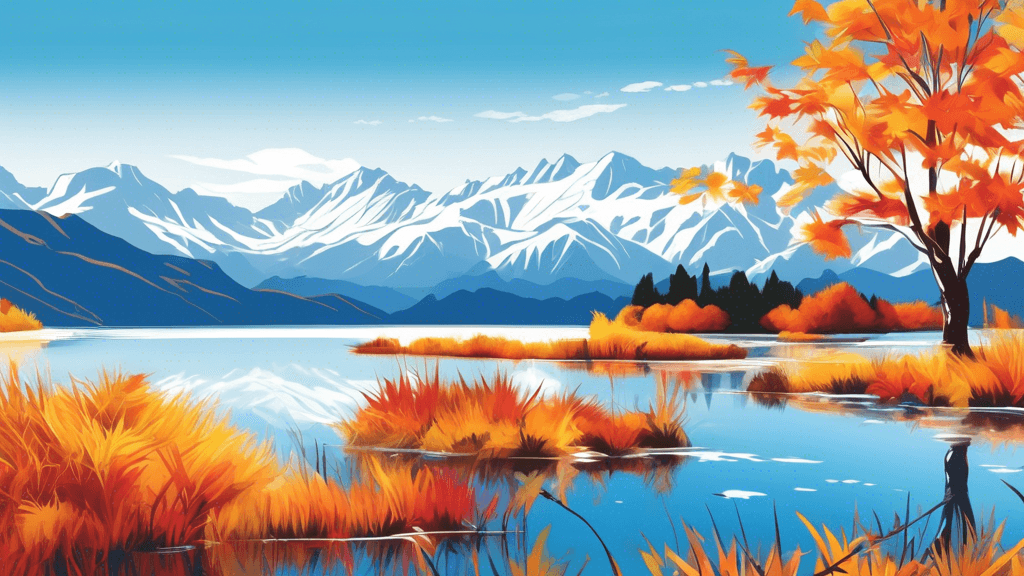
Capturing Change: Seasonal Beauty in New Zealand's Landscape Photography
Share
Exploring the Seasonal Spectacle of New Zealand’s Landscapes
New Zealand, a land renowned for its jaw-dropping vistas and diverse ecosystems, presents unique opportunities for photographers aiming to capture the essence of nature's dynamic transformations. But why does seasonal change in New Zealand offer such a compelling subject for photographers? What techniques help in effectively capturing these changes? Let’s dive into the visual journey that New Zealand’s landscapes offer through the changing seasons.
The Magic of New Zealand's Seasons
Unlike many regions of the world where seasons blend subtly into one another, New Zealand's climate is distinctly expressive, each season painting the landscapes with a bold, fresh palette. Here’s what each season brings to the lens:
- Spring (September - November): This is a celebration of new life. Photographers will find velvety greens in the rolling hills, bursts of wildflowers, and the snowy peaks of the Southern Alps slowly melting away.
- Summer (December - February): Characterized by long daylight hours and less precipitation, the lushness seen in spring gives way to golden hues and clearer, expansive skies—perfect for capturing sunsets and coastal scenes.
- Autumn (March - May): Perhaps the most dramatic, the landscapes are set ablaze with vibrant reds, oranges, and yellows. The cooling temperatures bring with them morning mists that add a magical quality to dawn photography.
- Winter (June - August): Snow caps the mountains, frost dusts the foliage, and the light becomes crisp, creating high-contrast scenes ideal for black and white compositions.
Each season not only transforms the landscape but also the way light interacts with the elements, offering photographers a varied spectrum of conditions to work with.
Techniques for Capturing Seasonal Changes
Effectively capturing the essence of New Zealand’s changing seasons requires both technical skill and an artistic eye. Below are some techniques that can enhance the quality and impact of landscape photography:
- Understanding Light: The quality of light varies greatly throughout the year. Winter offers sharp, clear light which is quite different from the soft diffusions found in spring. Capturing the best light often means planning photo shoots during the golden hours of sunrise and sunset.
- Composition and Perspective: Use natural lines — be it the curve of a beach or rows of trees — to lead the eye into the scene. Experimenting with different viewpoints can dramatically alter the narrative of a photograph.
- Long Exposure: Especially useful in capturing flowing water or clouds, long exposure can convey the passage of time within a single frame, ideal for emphasizing change.
- Post-processing: Enhance the natural beauty without overpowering the scene. Techniques like HDR (High Dynamic Range) imaging can help preserve details often lost in shadows or highlights during tricky lighting conditions.
Inspiration from a Professional
To truly represent the transformative beauty of our landscapes, one must not just see, but observe; not just look, but feel, says Emma Chen, an award-winning landscape photographer based in Queenstown. What’s crucial is understanding the interplay between light, color, and texture through the seasons.
Emma’s work, celebrated for its emotive quality, underscores the importance of connecting with your subject on an emotional level. This connection, according to her, is what helps transcend a photograph from being merely a scene captured, to a story told.
The Role of Photographers in Environmental Conservation
Photography does more than just capture beauty; it has become a powerful tool for environmental conservation. By presenting the profound seasonal changes of New Zealand’s landscapes, photographers play a critical role in highlighting the urgent need for preserving such vistas against the threats of climate change and industrialization. Capturing and sharing the fragile beauty of these areas can galvanize public opinion around conservation efforts and can be seen as an act of environmental advocacy.
When the community sees the beauty through the seasons, their connection to nature is strengthened and their commitment to its preservation solidifies. Each image, each frame, serves as a reminder of what is at stake.
Conclusion: A Call to Capture and Conserve
Whether you are a seasoned photographer or a passionate beginner, New Zealand’s dynamic seasons provide a canvas that begs to be captured. The act of doing so not only feeds our creativity but also lends a voice to nature’s silent plea for preservation. So, load your cameras, ready your lenses, and step into the ever-changing theatre of New Zealand’s landscapes. Remember, in each frame you capture, lies the power to inspire change.
With our art, let us both celebrate and conserve the staggering beauty bestowed upon us by nature, for generations to come.





